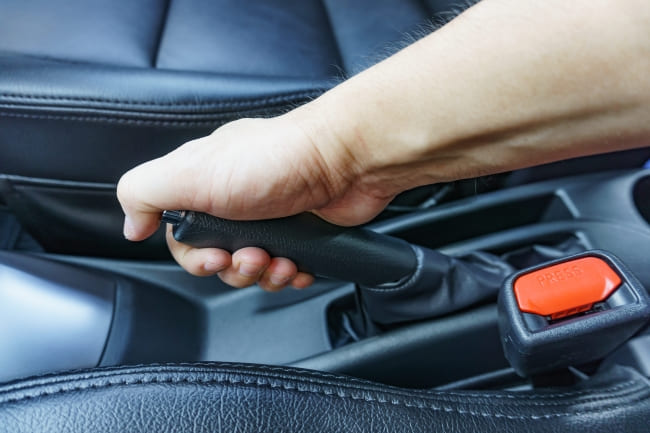
If you change the brake fluid, you must bleed your brakes. This is also necessary if you carry out certain work on your brake system. Only a properly bled brake system can work optimally and bring your vehicle to a standstill quickly. We explain here how you, as an experienced car mechanic, have to bleed your brakes yourself.
Contents
Why do you have to bleed your brakes?
Regardless of whether your vehicle is equipped with drum or disc brakes, the brake fluid is used up after two years. This is due to their hygroscopic properties, which means that they attract and absorb water. If you now brake very hard, the brake cylinder will heat up and the water will evaporate. As a result, this gas means that you can no longer brake properly because your braking system no longer reacts appropriately to your brake pedal. After replacing the brake fluid, a brake system bleed is necessary for your brakes to work really efficiently. If you want to determine exactly when to replace, use a boiling point meter. The brake fluid type determines the minimum value that still has to be reached. This is usually in the range of 145 to 180°C, so below that an exchange is mandatory.
What do you need to bleed your brake system yourself?
If you want to bleed the brake system yourself, it is advisable to have two people do it. In this context, please observe the necessary security measures. Brake fluid is very aggressive and should not come into contact with your skin, your eyes or your vehicle's paintwork. We recommend that you change the brake fluid at the same time as you bleed the brake system. In order to carry out the work, you should have a suitable, lockable collection vessel and a transparent hose at hand in addition to the usual tools and protective goggles plus gloves. You also need sufficient brake fluid, the type of which is specified in your vehicle documents.

First, start with the wheel furthest from the master cylinder on the brake pedal. In a left-hand drive vehicle, this is the right wheel on the rear axle. Raise this wheel with a jack and secure your car well. It is advisable to remove the corresponding wheel. Now connect a clear drain hose to the vent valve and place the other end in a securely sealable receptacle. After opening the bleed valve, slowly depress the brake pedal (do not fully depress). This forces the brake fluid out of the brake system. This is repeated on all wheels. After all vent valves are closed again, new brake fluid can be poured in.
Now start again with the same wheel (rear right for left-hand drive vehicles). Then your helper pumps the brake pedal until the appropriate braking pressure can be built up. Then he holds it in the appropriate position (not fully depressed!) and you open the vent valve. The brake pedal slowly sinks towards the floor panel and the brake fluid flows through the hose. In the process, pleasure bubbles are also pressed out, which you can observe on the transparent hose. When the pedal is almost on the ground, close the bleed valve again and your assistant pumps the brake pedal again. This is repeated until no more air bubbles come out. Then continue with the next wheel. The exact order depends on which brake cylinder is further away from the master brake cylinder. Please make sure that there is always enough brake fluid in the expansion tank so that you do not force new air into your brake system.
How to bleed your brake system without helpers
If you don't have anyone who can help you bleed your brake system yourself, you could use certain tools. These include brake bleeding devices, which are also available in electrical versions, vacuum pumps or a suitable compressor. Appropriate instructions are included with the corresponding kits for bleeding the brake system. You should pay close attention to these so as not to make any mistakes that would jeopardize your security. If you use an electric brake bleeding device, you absolutely need an adapter that fits your brake fluid reservoir. This device builds up the right pressure there so that nobody has to press the brake pedal with the right pressure.
Frequently Asked Questions (FAQ)

⚠ What can you do when your brakes fail?
If your brakes fail while driving, you can use your engine braking to at least slow your vehicle down a bit. To do this, carefully shift down the gears one by one. If no further effect can be produced with this, you can use your handbrake. However, you have to dose this very well and note that this only brakes the rear wheels.
⚠ How can you tell if there is air in the brake system?
Symptoms that the brake system needs to be bled are a spongy operation of the brake pedal or other unusual reactions of the same. This also includes, for example, a „springs“ your pedal.
⚠ What can happen if you don't change your brake fluid?
Hygroscopic brake fluid absorbs water over time (which can accelerate if the seals are damaged). This water can form so-called vapor bubbles when braking because the brake fluid heats up. These bubbles significantly reduce the braking effect.
Conclusion
Bleeding the brakes is not only necessary to achieve optimum vehicle efficiency. After all, unbled brakes are a real safety risk because you may not be able to stop your vehicle quickly enough. So use our support to bleed your brake system correctly.
A tip from CarTipsandmore: Check your brake fluid level at regular intervals. If this drops during normal operation, this indicates leaks in the system. In such a case, immediately check which component of your brake system is leaking in order to replace it. This is the only way to ensure the road safety of your car and always drive with peace of mind.
